
Joan of Arc was an American indie rock band from Chicago, Illinois named after the French saint Joan of Arc. They formed in 1995, following the breakup of Cap'n Jazz.
Braid is an American emo band from Champaign, Illinois, formed in 1993.

Frame & Canvas is the third studio album by American rock band Braid. It was released on April 7, 1998, through Polyvinyl Record Co. After the release of the band's second studio album, The Age of Octeen (1996), drummer Damon Atkinson replaced Roy Ewing due to him being unable to commit to touring. Recording sessions took place at Inner Ear Studios in December 1997, with J. Robbins helping with production during the sessions. The album is an emo and post-hardcore release, for which the lyrics were co-written by vocalist/guitarists Chris Broach and Bob Nanna, or solely wrote by Nanna.
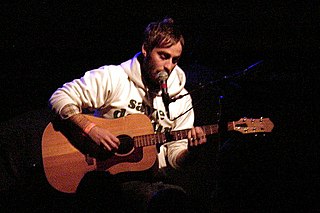
Owen is a solo project of Mike Kinsella, and part of the Chicago, Illinois indie rock scene.
Owls are an indie rock band from Chicago, Illinois. They were initially active from 2001 to 2002 and reunited in 2012. The band is composed of the original lineup of the emo band Cap'n Jazz excluding guitarist Davey von Bohlen, who had left to form The Promise Ring. The lineup has included brothers Tim Kinsella and Mike Kinsella, guitarist Victor Villareal and bassist Sam Zurick. Tim Kinsella and Zurick have also played together in Joan of Arc and Make Believe. Villarreal and Zurick played together in the instrumental rock group Ghosts and Vodka. The band signed to Jade Tree on May 3, 2001, and released their debut on July 31.

American Football is an American midwest emo/indie band from Urbana, Illinois, originally active from 1997 until 2000. They reformed in 2014.
Polyvinyl Record Co. is an American independent record label headquartered in Champaign, Illinois. The label also has satellite offices in New York, Austin, and the Bay Area. Polyvinyl has put out over 400 releases to date.

Mike Kinsella is an American musician and singer-songwriter. Having been involved in many Illinois-based bands, he is best known as the lead vocalist and guitarist of the emo band American Football.

Burritos, Inspiration Point, Fork Balloon Sports, Cards in the Spokes, Automatic Biographies, Kites, Kung Fu, Trophies, Banana Peels We've Slipped On, and Egg Shells We've Tippy Toed Over, more commonly known as Shmap'n Shmazz, is the only full-length studio album by the American emo band Cap'n Jazz. It was released in 1995 on the record label Man With Gun. Cap'n Jazz's lineup at the time of recording comprised Tim Kinsella on lead vocals, Davey von Bohlen and Victor Villarreal on guitar, Sam Zurick on bass guitar, and Mike Kinsella on drums.
Castor was an American indie rock/emo band from Champaign-Urbana, Illinois. Formed in 1994, they were known for their "fluid" sound, often changing time signatures several times in a song while maintaining the flow of the music. They released two albums, the first self titled in 1995, the second Tracking Sounds Alone in 1998. Both albums are now out of print and only available in digital format online.
Emo pop is a fusion genre combining emo with pop-punk, pop music, or both. Emo pop features a musical style with more concise composition and hook-filled choruses. Emo pop has its origins in the 1990s with bands like Jimmy Eat World, the Get Up Kids, Weezer and the Promise Ring. The genre entered the mainstream in the early 2000s with Jimmy Eat World's breakthrough album Bleed American, which included its song "The Middle". Other emo pop bands that achieved mainstream success throughout the decade included Fall Out Boy, the All-American Rejects, My Chemical Romance, Panic! at the Disco and Paramore. The popularity of emo pop declined in the 2010s, with some prominent artists in the genre either disbanding or abandoning the emo pop style.
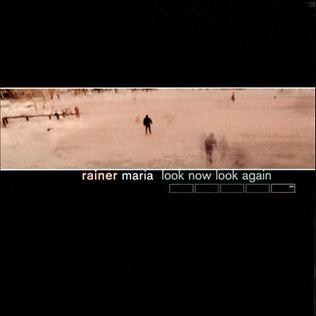
Look Now Look Again is the second studio album by American indie rock band Rainer Maria. It is now regarded as an influential classic of second-wave emo.

Owls is the debut studio album by American rock band Owls, which was released on July 31, 2001, through Jade Tree. After the disbandment of Joan of Arc, frontman Tim Kinsella reunited with the former members of Cap'n Jazz to form Owls. They recorded with Steve Albini at Electrical Audio in Chicago, Illinois, in April 2001. The album is an emo and indie rock record that has been compared with the works of Ghosts and Vodka, Pavement, and Captain Beefheart.
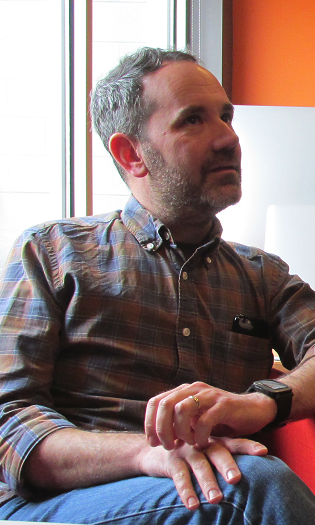
Matt Lunsford is the founder and co-owner of Polyvinyl Record Co., an American independent record label headquartered in Champaign-Urbana, Illinois.

American Football, also known retrospectively as LP1, is the debut studio album by American Midwest emo band of the same name, released on September 14, 1999, through Polyvinyl. It was recorded shortly after the band released their debut self-titled EP through Polyvinyl in October 1998. The group, consisting of vocalist/guitarist Mike Kinsella, guitarist Steve Holmes, and drummer Steve Lamos, recorded their debut album at Private Studios in Urbana, Illinois, with production from Brendan Gamble.
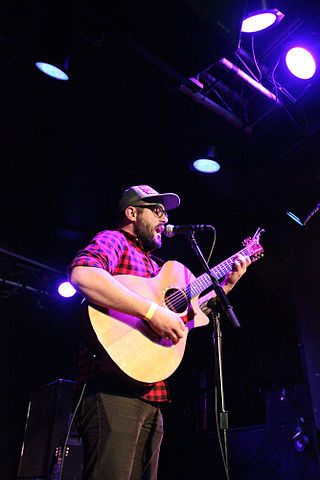
Into It. Over It. is an indie rock band founded in 2007 as the solo project of Chicago, Illinois-based musician Evan Thomas Weiss. It is considered a leading act of the early-2010s emo revival scene.
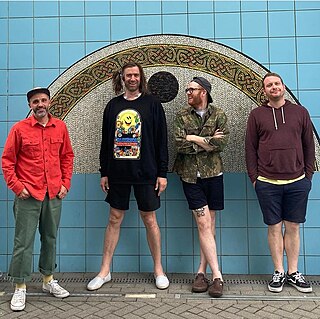
Algernon Cadwallader is an American emo and math rock band from Yardley, Pennsylvania. They were originally active from 2005 to 2012. In 2022, the band regrouped and began touring again. Stereogum referred to the band as the "heroes of the emo revival".

American Football is the eponymous second studio album by American rock band American Football, released on October 21, 2016 through Polyvinyl. It was the band's first release since their debut self-titled album American Football in September 1999 and disbandment in 2000. In April 2014, American Football announced they would be reforming after fifteen years for a number of live performances, playing shows through the year and into 2015. In early 2016, American Football began recording the second album with Jason Cupp at ARC Studios in Omaha, Nebraska, and at SHIRK Studios in Chicago, Illinois.

American Football is the eponymous third studio album by American rock band American Football, released on March 22, 2019 through Polyvinyl and Big Scary Monsters.

The discography of the American rock and emo band American Football consists of three studio albums, two extended plays (EP), four singles and eight music videos. Because all three albums are eponymous, they are known as LP1, LP2, and LP3. The band was formed in 1997 in Urbana, Illinois, by Mike Kinsella, Steve Lamos, and Steve Holmes while they were students at the University of Illinois at Urbana-Champaign. A year later, they released a self-titled EP, followed by their debut studio album, American Football (LP1), in 1999. Shortly after, the band graduated from college, and not expecting the album to receive any attention, broke up.















